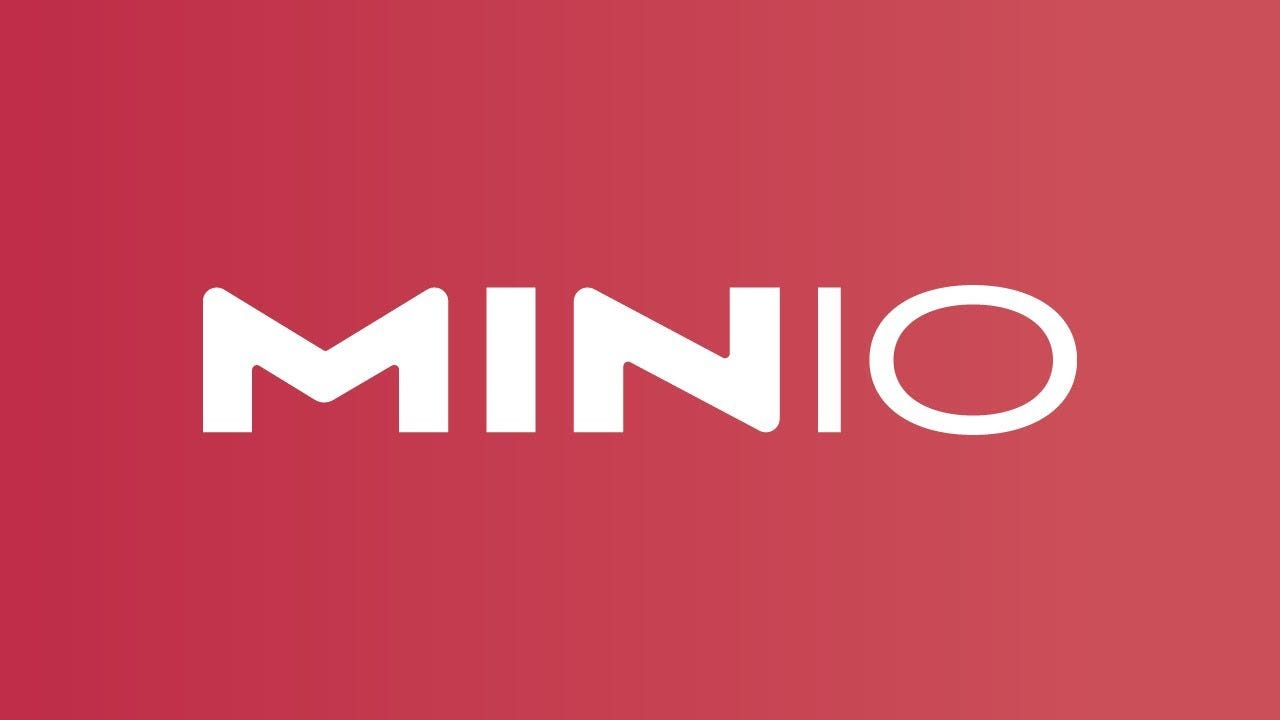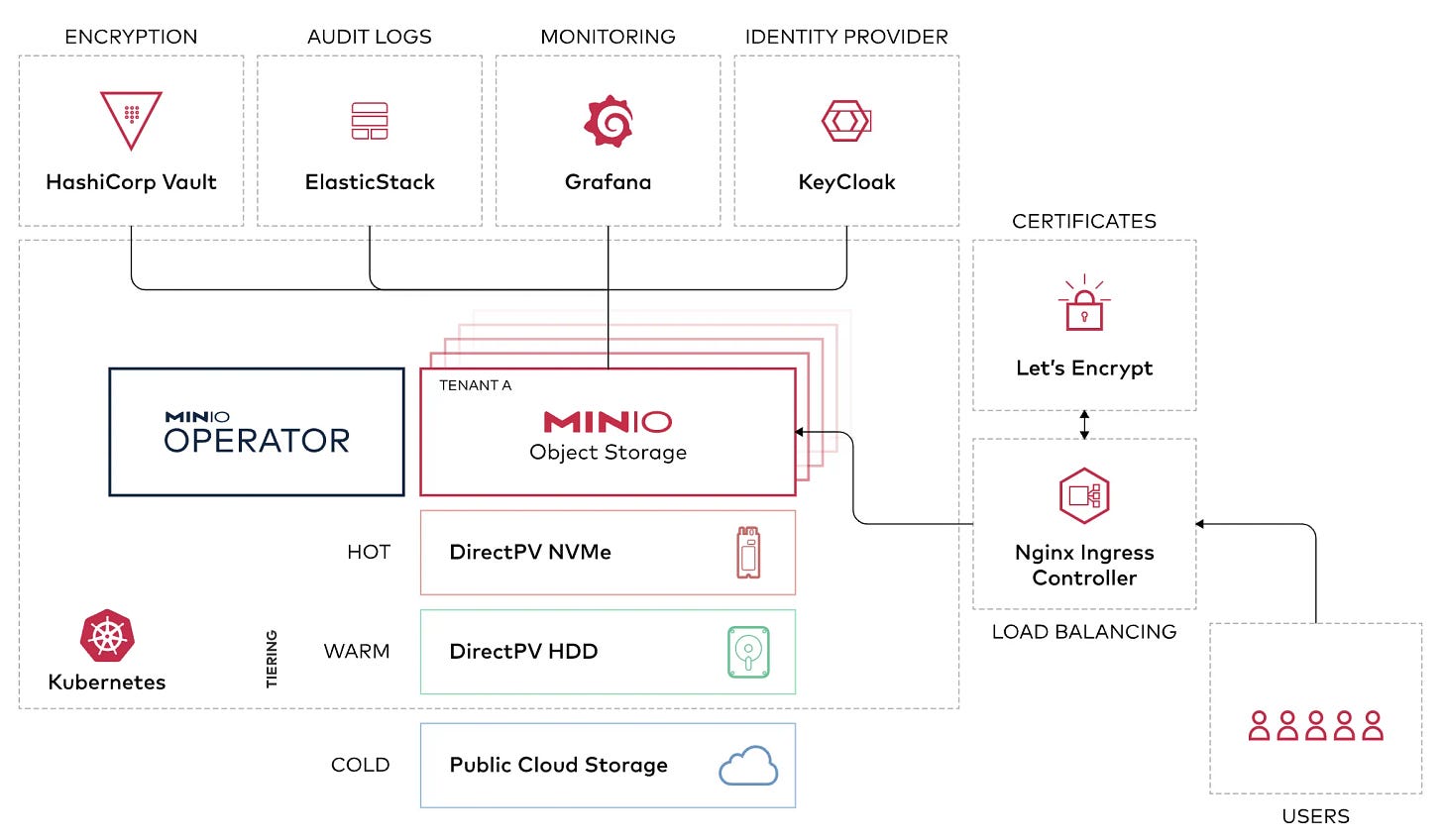MinIO on Microk8s: Install AWS S3 Alternative on Single Node Kubernetes Cluster
MinIO is an open-source, high-performance, and cloud-native object storage system.
Introduction
In an era dominated by digitization and big data, reliable, efficient, and scalable cloud storage solutions have become integral to businesses across industries. This demand has driven innovation and led to the creation of many storage solutions. Among these, MinIO, an open-source object storage system, has emerged as a powerful contender.
What is MinIO
MinIO is an open-source, high-performance, and cloud-native object storage system. It is designed for large-scale private and public cloud infrastructure. MinIO's standout features include its excellent scalability, impressive speed, and API compatibility with Amazon's S3 cloud storage service. In addition, its software-defined nature allows it to run on a variety of hardware and cloud platforms, making it a versatile solution for businesses of all sizes.
Inception
MinIO was created to address the mounting need for a robust, scalable, and secure object storage system that could handle ever-growing data volumes in today's cloud-dominated era. Its genesis was guided by the vision to make object storage widely accessible, efficient, and capable of handling modern data workloads.
The founders, Anand Babu Periasamy, Garima Kapoor, and Harshavardhana, brought this vision to life, leveraging their collective experience in the storage domain. They recognized the gaps in the existing cloud storage solutions—many were not designed for high-performance workloads and lacked the required scalability—MinIO was their answer to these challenges.
MinIO Architecture
MinIO follows a distributed architecture designed to optimize scalability and performance. Let's delve deeper into its architecture and the principles behind it:
Distributed Mode
MinIO can be deployed in a distributed mode to create a high-availability storage system with no single point of failure. The distributed mode lets you pool multiple drives across many nodes, treating them as a single, logical storage entity. This mode also helps distribute the I/O load evenly across all drives, enhancing system performance.
Erasure Coding and Bitrot Protection
MinIO uses erasure coding for data protection. When you store an object, MinIO shards the data across multiple drives — the number of drives depends on your setup. Even if you lose up to half the drives (N/2) in your setup, you can still reconstruct the data.
Alongside, MinIO uses bitrot protection to safeguard data against corruption at the hardware level. Each data and parity block gets a checksum when written, which is verified during each read.
Consistent, Object-Level Locking
MinIO uses a variant of the Read-Write Locking mechanism for managing access to data. This system ensures that read and write operations on a single object are mutually exclusive. Consequently, this prevents inconsistencies and data corruption that could otherwise result from simultaneous write operations.
S3 Compatible API
MinIO exposes an Amazon S3-compatible API, allowing you to use existing S3 client SDKs, CLI, and other tools to interact with MinIO. The API is not an emulation but a reimplementation of the AWS S3 API, so it behaves exactly as expected, with few differences.
MinIO Client and SDKs
MinIO provides a client — mc for interacting with MinIO and other S3 compatible object storage services. It supports file management operations similar to Linux ls, diff', rm, cp, mirror, etc.
For developers, MinIO offers SDKs for popular programming languages like JavaScript, Java, Python, .NET, and Go, easing the task of building applications using MinIO.
MinIO Operator and Console for Kubernetes
MinIO provides an Operator and a Console for Kubernetes to extend its native functionalities. The MinIO Operator brings native support for managing MinIO instances on Kubernetes. Simultaneously, the Console provides a graphical user interface for administering the MinIO deployment.
In conclusion, MinIO's architecture is built around principles of performance, scalability, and data protection. It leverages distributed systems concepts to create an object storage service that's robust, resilient, and compatible with the vast Amazon S3 ecosystem.
MinIO vs AWS S3 vs Ceph
When comparing MinIO with other solutions, we'll focus on Amazon S3, a leading proprietary solution, and Ceph, a popular open-source alternative.
Amazon S3
Renowned for its extensive feature set, durability, and integration with the AWS ecosystem, S3 sets a high standard for cloud storage solutions. However, it comes with a more substantial price tag, especially when data egress costs are considered.
MinIO, on the other hand, allows businesses to capitalize on the S3-compatible API while retaining the ability to host on any hardware or cloud platform. This flexibility reduces costs and eliminates vendor lock-in. Additionally, MinIO's high performance and scalability make it suitable for large-scale data workloads, a capability only available in the more expensive tiers of Amazon S3.
Ceph
Ceph is another robust open-source storage solution that provides object, block, and file storage in a single platform. While this versatility is a strength, it also contributes to Ceph's complexity.
MinIO's advantage lies in its focus on being the best object storage system. Its architecture is leaner and simpler than Ceph's, leading to lower overhead and easier management. In terms of performance, MinIO's design allows it to handle higher throughput and IOPS than Ceph, making it the preferred option for high-performance workloads.
In the world of container orchestration, Kubernetes reigns supreme. MinIO's compatibility with Kubernetes ensures it can serve as a scalable and reliable storage option within a Kubernetes environment. Businesses can deploy MinIO instances on Kubernetes clusters, enjoying the benefits of both MinIO's powerful object storage and Kubernetes's container orchestration capabilities.
This synergy is facilitated through the MinIO Operator, a tool designed to manage MinIO instances on Kubernetes. The operator automates various tasks such as deploying a MinIO instance, scaling the instance up or down, and managing upgrades, thereby simplifying the management of storage within a Kubernetes environment.
Microk8s offers a convenient MinIO addon that simplifies the process of installing MinIO on Microk8s. This addon takes care of the installation of all required resources and dependencies for MinIO to function efficiently on a Kubernetes cluster. To enable MinIO on Microk8s, proceed as follows:
~$ microk8s enable minioThe aforementioned command will yield a response containing the default key and secret for MinIO, functioning similarly to the AWS Key and Secret. To ensure that the installation process was successful, you can follow these verification steps:
~$ kubectl get pods -n minio-operator
NAME READY STATUS
console-xxx 1/1 Running
minio-operator-xxx 1/1 Running
microk8s-xxx 1/1 RunningBy default, the addon sets up two replicas of MinIO, which may not be ideal for a single Kubernetes cluster. Hence, we need to adjust this configuration to utilize just one replica instead.
~$ kubectl edit statefulset microk8s-ss-0 -n minio-operatorUpdate spec.replicas: 1 and save.
And there you have it! You've successfully set up an open-source, scalable, and S3-compatible object storage platform with MinIO on your Kubernetes cluster. Congratulations!
About 8grams
We are a small DevOps Consulting Firm that has a mission to empower businesses with modern DevOps practices and technologies, enabling them to achieve digital transformation, improve efficiency, and drive growth.
Ready to transform your IT Operations and Software Development processes? Let's join forces and create innovative solutions that drive your business forward.






